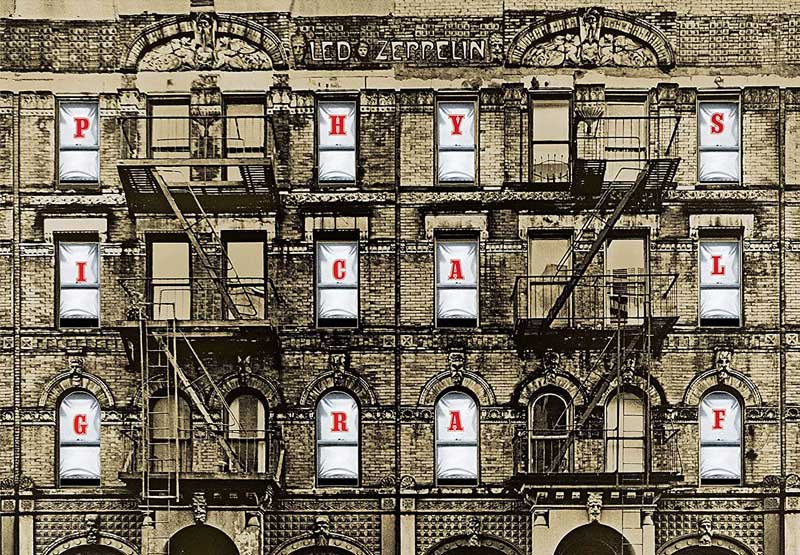The debut release on their newly-established Swan Song Records imprint, Led Zeppelin’s sixth album, Physical Graffiti, was first issued on 24 February 1975 and met with rapturous critical praise. Billboard hailed it as a “tour de force”, while Rolling Stone boldly declared it “the band’s Tommy, Beggars Banquet and Sgt Pepper rolled into one”, adding, “Physical Graffiti is Led Zeppelin’s bid for artistic respectability.”
Listen to Physical Graffiti here.
“A monumental piece of work”
Physical Graffiti still holds its own in such exalted company. The sound of a band at the very peak of their powers, it was – and remains – one of rock’s high-water marks, and its creators rightly feel it’s matured very nicely.
“All of us knew that it was a monumental piece of work, just because of the various paths we’d trodden along to get to it,” Jimmy Page told Rolling Stone in 2015. “It was like a voyage of discovery, a topographical adventure.”
Given one of Led Zeppelin’s typically lavish album covers, Physical Graffiti was housed in Peter Corriston’s elaborate die-cut sleeve depicting a New York tenement block. Clocking in at an ambitious 80 minutes, it was refreshingly free of filler and showcased the group at their most thrillingly diverse. The tracklist included a generous helping of their trademark gut-level rockers to go alongside the best Led Zeppelin songs (Custard Pie, The Rover, The Wanton Song), but also took in the everything from the sweaty funk of Trampled Under Foot to acoustic workouts such as Page’s Bron-Yr-Aur and complex, suite-like epics In The Light and Ten Years Gone.




